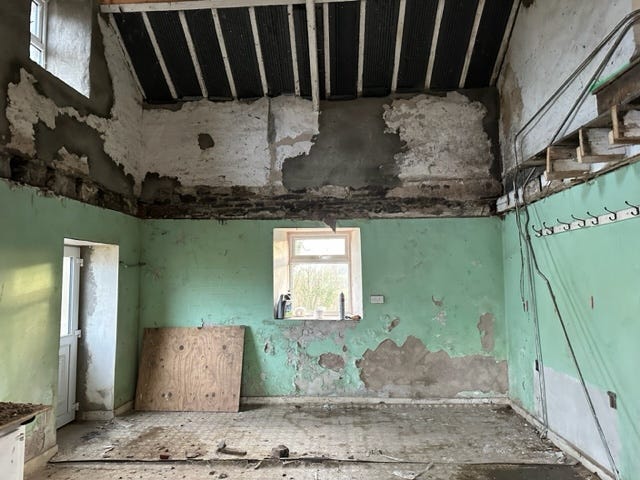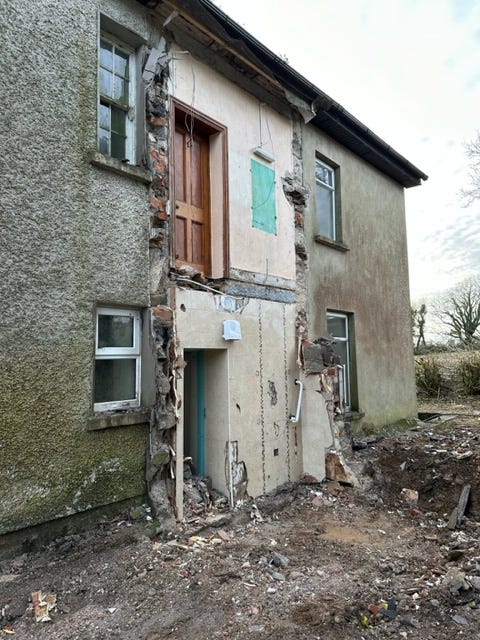Higher House Hurdles
The median mortgage payment is today around $2,800, which leaves a lot of houses for sale and few people able to buy them. Sellers now outnumber buyers by the biggest margin ever.
Friday, June 27th, 2025
Bill Bonner, from Youghal, Ireland
The latest report shows the economy shriveling up more than expected.
The Hill:
First-quarter gross domestic product (GDP) growth was revised lower Thursday in light of reduced consumer spending, surprising economists.GDP contracted by 0.5 percent on an annualized basis, 0.3 percentage points lower than the last measurement from the Commerce Department.
Does it make any difference? Maybe not. GDP figures are largely meaningless or misleading. They don’t tell you much that is useful. And what they pretend to tell you is mostly fraudulent.
More on that next week. Today we look at a way to make money that is probably the least fraudulent and easiest to understand — real estate. But wait. A Redfin forecast:
U.S. Home Prices Will Dip 1% By the End of 2025
Redfin economists expect the median U.S. home-sale price to fall flat in the third quarter, and fall 1% year over year by the fourth quarter. When it comes to mortgage rates, we expect them to remain elevated near 7% for the remainder of the year.
We just bought an abandoned farm in Ireland. We’re enjoying putting it back in order — fixing stone walls, insulating walls, redoing plumbing, electricity and heating, planting new gardens and tidying up the old ones.
There were many bidders for the farmland around it. But no one wanted to deal with a group of dilapidated outbuildings surrounding a wreck of a house from the 19th century.
For us, it is a pleasure; but not a way to make money.
“Some guys play golf. Some watch TV. We just like restoring houses,” we explained to a puzzled neighbor.
(On a practical level, our family — children and grandchildren — is getting bigger while our cottage seems to be getting smaller.)
Property has utility — whether you use it yourself or rent it out. That utility is measurable, simply by checking comparable rents. The calculations are easy. You subtract the costs — maintenance, taxes, utilities, etc. from the (possible) rental income. That is your return on investment. If it is more than the “hurdle rate” — usually measured by the yield on a ‘risk-free’ US 10-year bond — you are ahead of the game.
But investing in real estate that you won’t live in is like investing in a private business. It is specific. You’ve got to ‘know the territory.’ Each market is different. Each property is different. Each has its own story to tell.
Elizabeth, your editor’s wife, invests in small apartment buildings. In Baltimore. The city is in many ways a disaster. But many of its old houses — relics of the Gilded Age, converted to apartments — are handsome and solid. They were built when the city was rich. And, compared to other cities, they can be quite cheap.
“You have to know what you’re doing,” says Elizabeth. “I look for a solid place, with good infrastructure, but often in need of a little ‘updating.’ I’m usually willing to pay about $125,000 ‘per door,’ as they say.”
“All you can count on is the rental income. It’s got to pay the taxes, the upkeep and the management. And in my area, if I go much above $125,000 per unit, the numbers are hard to make work.”
Nationwide, the median monthly apartment rent is about $2,100, according to Zillow. We don’t know what it is in Baltimore; probably around $1,400 would be a safer guess. You need a margin of error. That gives you a gross rent of $16,800 per year per door. If you paid $125,000 for the property…spent half of that on management, taxes, and maintenance — again, very specific numbers per property …you end up with $8,400 per unit, which would give you about a 6% return.
Which is only to point out how ‘local’ the business is. You can’t just buy ‘at the market price’ and forget about it.
“I try to stick to the rule of eight,” says Elizabeth. “I’m willing to pay eight times gross rents...and hope to end up with a 5% net return.”
Many people look to their own houses as sources of ‘investment’ gains. But houses aren’t ‘investments.’ Builders add wealth by building houses — at a profit. The homeowner may paint the trim or add a sunroom; rarely do improvements pay off.
“Real estate never goes down,” was on millions of lips prior to the mortgage finance crisis of ’07-’08. Then housing prices did go down. Four million families lost their homes when prices were no longer high enough to support re-financing.
The Fed in its wisdom, lowered interest rates to try to undo Mr. Market’s correction, creating a new distortion. Over the last ten years, house prices have approximately doubled, rising twice as fast as wages. Over the last five years alone, median mortgage payments have doubled.
This, of course, caused an affordability crisis, as the average family was no longer able to buy the average house. The median mortgage payment is today around $2,800, which leaves a lot of houses for sale and few people able to buy them. Sellers now outnumber buyers by the biggest margin ever.
As Mr. Market gets his bearings, we expect prices to come down, as Redfin projects. Already, this year, we’re seeing a drop in the rate of house price appreciation — down to just 1.3% annually.
And if we are right about the primary trend in the credit market — towards higher yields over many years — we can also expect that speculative gains on residential real estate will vanish. Prices may go up. But they probably won’t keep up with inflation.
Stay tuned.
Regards,
Bill Bonner
Research Note, by Dan Denning
Between March of 2020 and April of 2022, the Federal Reserve purchased almost $1.5 trillion mortgage backed securities (MBS) to add to its balance sheet. It had $1.3 trillion MBS on the balance sheet at the time and STILL has $2.1 trillion (down from a peak of $2.7 trillion in July of 2022).
The Fed’s appetite for MBS fueled a lending boom that led a nationwide rise in house prices, directly causing the current affordability crisis. Part one of the crisis was the surge in house prices, backstopped by Fed MBS buying. If you can believe it, the Fed’s MBS holdings peaked in April of 2023. That was AFTER it raised interest rates eleven times in just over a year—a 525 basis point rise from .25% to 5.5% (to fight the inflation caused by reckless fiscal policy).
The chart above from the New York Fed shows that vast majority of the new mortgage lending during and after the pandemic went to borrowers with credit scores above 760. Contrast this with the surge in new mortgages in 2003 and 2004. These were ‘subprime’ borrowers with lower credit scores. My point?
The Fed subsidized a lending boom to people who were already wealthy and probably already owned a home (there were socialists in New York before Zohran Mamdani, they just lived on Wall Street). Fed policy is designed to make asset owners wealthier, at least in nominal dollar terms. But with housing affordability in the US at its worst ever, who will the new buyers sell to?







Never planned on selling my CA rental properties, hoped to pass them on as a legacy to my children and grandchildren. Being a landlord takes up a lot of time and is a lot of work. Unfortunately, the state of CA has now also made being a landlord a very high-risk business due to crazier and crazier tenant laws. WE NO LONGER OWN OUR REAL ESATATE, THE TENANTS AND THE STATE OF CA OWN IT. They still allow me to pay the taxes. They also have made it impossible to pass my assets to my children without them paying very high taxes after my death, which will force them to sell. If I sell now and pay the Fed Cap gains tax (A horrible tax on inflation) I lose 20% of my principle in real terms! Trapped in CA, the no longer "Golden state". God Help Us.
It sure is nice reading Bill on money and business. Coming from a family of modest employment incomes, my parents chose real estate to get ahead. I used to hate weekends as a kid because while all my peers where riding bikes and screwing around with their friends I was scraping wall paper, pulling up linoleum floors, and cleaning up yards and gardens. My favorite day was Monday.
The rents were never the prize. Even when they fetched a solid return, those profits could and did vanish when people moved out and money had to be spent renovating; even a short term vacancy would cut deeply into the net revenue stream. But, in Southern California during the 60's, 70's and 80's if you could cover your costs and keep the property maintained there was always a "seller's market" just around the corner that made the whole enterprise worthwhile. My point with all this is that there was no get rich quick about it. One had to be patient and learn the lesson of delayed gratification. IMHO, that's the real beauty of investing in real estate.